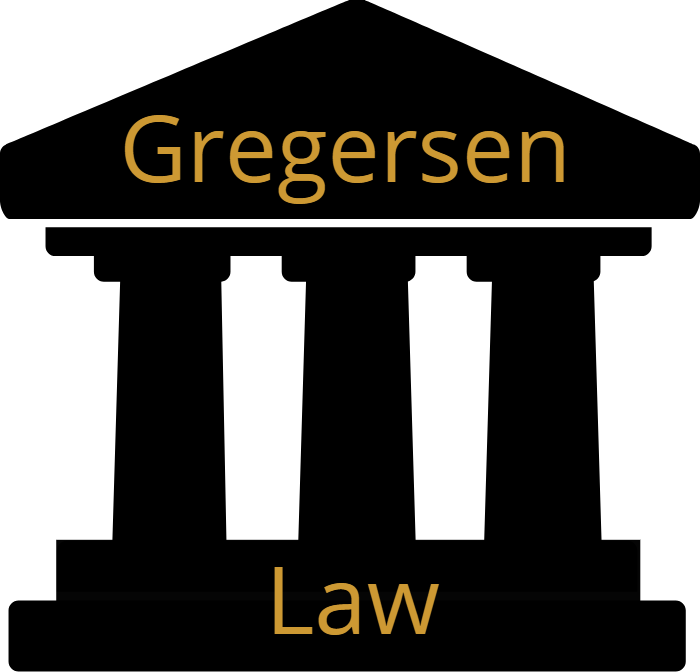Summary of:
Dykes v. Arnold, 129 P.3d 257 (Or. App. 2006).
http://www.publications.ojd.state.or.us/A121699.htm
FACTS: Boundary dispute as to land of parties in southwest quarter of sec12.
1870 Federal Surveyor Mercer set exterior corners.1899 redwood post set as center of section by county surveyor Derrick. “Stubbed in” center by measuring half-way between east & west qtr cnrs, rather than intersection of 4 qtr cnrs.
Fisher owned parent lot 1400. 1977 created 1401 and conveyed to df Arnold, after they walked land and observed fences running to center as marked by Derrick.
Plaintiff Dykes bought land in south, and hired Denison who retraced Mercer. Retraced where center should have been placed, using method required by section 3-87 of 1973 BLM Manual. Did not retrace county surveyor Derrick’s placement of center, because method flawed, and not deemed correct as an original survey. Places boundary 71 feet north of occupation lines.Defendant Arnold bought land to north, and hired Nyhus who retraced Derrick. Retraced where County Surveyor Derrick placed center of sec 12 in 1899, using road & old fences.
PL Dykes sued to eject DF Arnold to north, from 71 feet of land occupied by DF. Trial court chose Nyphus survey, and quieted title in DF. PL appealed. Fn.1: Adverse possession and acquiescence are not in issue, since trial court rejected DF’s claim to these, and claim not pursued on appeal.
ISSUES: Note that the court does not limit their task to determining which point controls the disputed boundary. Rather, the court says that they are deciding what is the center of section. Since the center of section then governs the quarter lines (north-south, and east-west), this opinion would govern all parcels along each of these lines? Yet such owners are not parties to this suit.
1) If a surveyor places a monument at a position not mathematically precise, and monument not called to as control in deed dividing parent parcel, yet the parties thereafter rely on the monument as controlling a boundary, then is the monument deemed to control the boundary, just as if called to by the deed creating the line? Yes.
2) If county surveyor is first to survey interior of section, and marks center position not mathematically precise, then is position deemed the center, because survey is deemed original? Yes.
ANALYSIS. The intent of the parties to 1977 deed of Lot 1401 to DF: The inquiry in determining a boundary, is to ascertain the intent of the parties to the deed, as evidenced by the deed and the circumstances attending its execution. That is, in the deed which conveyed Lot 1401 to DF in 1977, what was meant by its reference to center of section 12? (NE cnr of 1401 is center of section; South line of 1401 is boundary with PL).
Deed to Lot 1401 is ambiguous in referring to center of section 12, referring neither to Derrick’s survey, nor to the center by reference to the original Mercer plat. Therefore, must ascertain intent of parties, when deed to Lot 1401 referred to center of section 12.
Parties to the Lot 1401 deed, considered the fence post to mark the center of section.
Note that court uses parol evidence (evidence outside of the 4 corners of the deed, consisting of evidence that there is a difference between the position of the center of section a marked on the ground, and as legally prescribed) to determine whether the deed is ambiguous, and thus whether parol evidence may be used to interpret the deed.
B. Legal Validity of survey by County Surveyor Derrick:
The survey of Derrick should be regarded as the first official survey of the interior, and controlling, since was the only survey to monument the center of section for 100 years, and since the parties relied on this position.
If the center of section as it would be if located by a correct survey, does not conform with lines of occupation, and if the center of section was set by the county surveyor, then deem it to be the original corner. Give it the same dignity as corner originally set by the federal government, with the same status as if the original Mercer survey had placed a corner erroneously. Chaos could ensue if Derrick’s center were disregarded. It should be left in repose, and given legal effect. Df’s surveyor testified that PL’s method would leave a house in the middle of the county road.
MY CRITIQUE:
The opinion reaches the correct decision as to the boundary in dispute, since the disputed boundary was created with reference to the center placed incorrectly by Derrick. The result is thus correct, even though acquiescence is not claimed. However, the opinion overreaches, in declaring that this controlling point is also the center of section. “No act of the parties can relocate the section line as established by government survey, or interior subdivision lines of a government surveyed section. … These interior subdivision lines, not surveyed or marked in the government survey, are none the less certain in legal contemplation.” Upton v. Read, 56 So.2d 644 (Ala. 1952).
“No statute can confer upon a county surveyor the power to ‘establish’ corners, and thereby bind the parties concerned.” Thomas M. Cooley, The Judicial Function of Surveyors. “[A]n original surveyor can establish an original boundary line only for an owner who owns the land on both sides of the line that is being established …” Rivers v. Lozeau, 539 So.2d 1147 (Fla. App. 1989). Here, at the 1899 Derrick survey, the land on both sides was not held by the same owner. And acquiescence is not asserted. Therefore, Derrick was not the original surveyor, and could not have first established the center of section.
